8 essential tips before going out to meet wild marine mammals
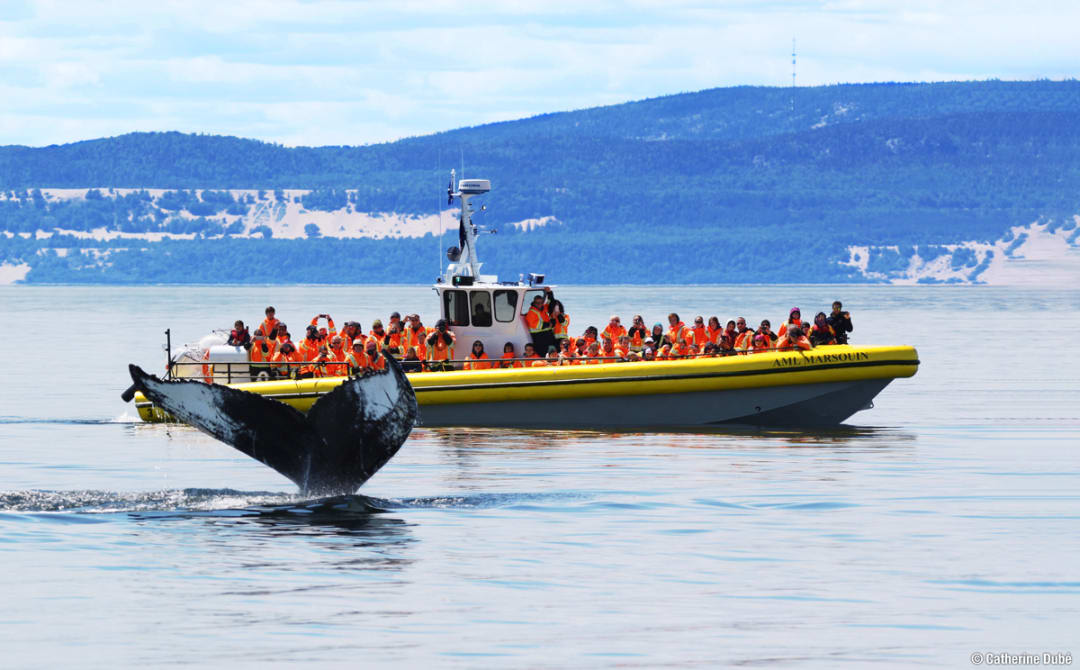
Discover the recommendations of a Dolphinesse ethologist specialising in responsible interactions with cetaceans, so that you can meet these marine mammals in the best possible conditions.
Marine mammal watching and swimming tourism has become increasingly popular around the world over the last fifty years.
However, more than a third of marine mammals are now threatened with extinction, according to the latest 2019 IPBES report. Hunting, overfishing, ship strikes, water pollution, plastic contamination, underwater noise and climate disruption threaten the survival of these wild populations.
Mass tourism linked to cetaceans, which is neither regulated nor supervised and is carried out without the appropriate skills, has extremely harmful consequences for these animals. As travellers, it is vital that we make responsible and informed choices when it comes to encounters with cetaceans.

Valérie Valton, an ethologist specialising in interactions with cetaceans at Dolphinesse, shares some of her insights.
1. What species of cetacean can you encounter?
It's essential to find out what species are present where you're going. The first thing to check is whether or not it is legal in the country or region in question.
If so, search on the internet for "conservation status of (the species concerned) in (the country concerned)". If you can't find it in the country concerned, you can always check what the conservation status of the species is worldwide.
If the species concerned in that country or region are under threat, then it is best to avoid meeting them so as not to worsen their situation.
However, if the species in question are healthy, all you have to do is check that the place you are planning to visit is not a surf spot frequented by tourists. If you find that this is the case, it's best to avoid adding to the tourism, which in any case will only offer you a poor quality encounter amongst the crowd of boats and/or swimmers.
If, on the other hand, tourism on the spot seems reasonable, you can go and meet them and look for an appropriate service provider.
2. How do you choose a responsible, respectful operator?
For cetacean watching without launching the boat
The easiest way is to check whether the operator has a label. There are labels around the world, such as 'high quality whale watching®', developed by the ACCOBAMS. These guarantee that the operator has learnt and is expected to respect good practice in terms of distance from the animals, speed and trajectory of approach, length of observation, and so on.
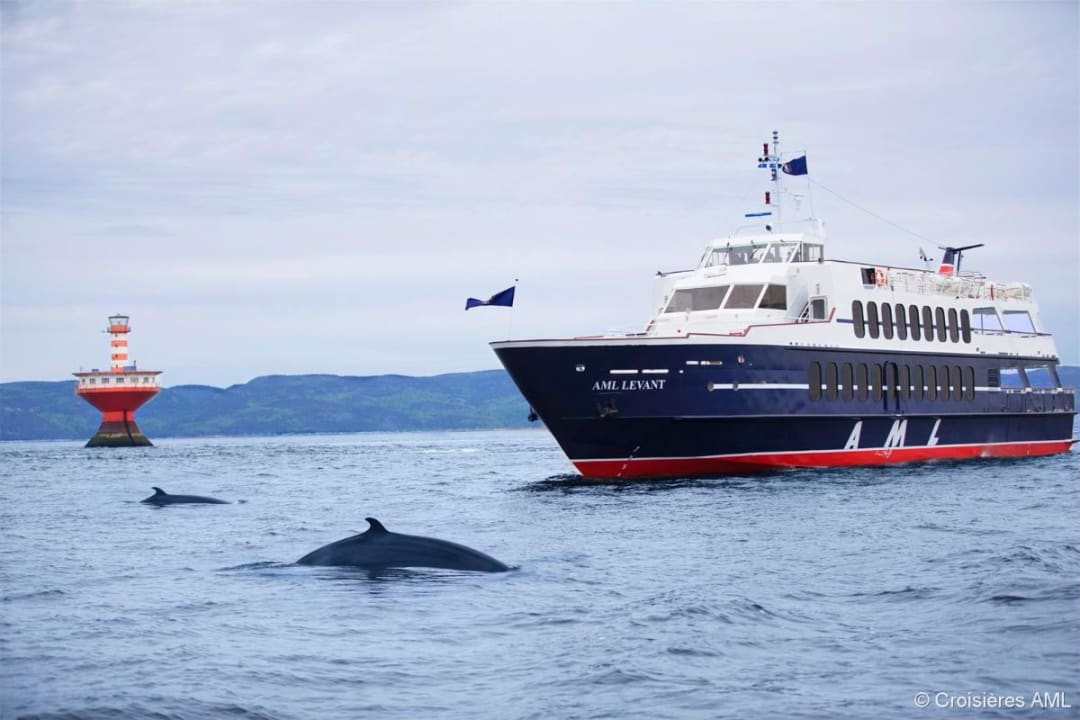
For swimming with cetaceans
There isn't really a label yet. So, to choose an appropriate service provider, look on their website or brochure to see if they highlight the following points:
- Respect for their approaches (slow, noiseless, boats kept at a distance from the animals (100 metres from whales and 30 to 50 metres from dolphins), passive approaches, non-intrusive in the water and respectful of the animals' wishes, etc.).
- Their guides' knowledge of animals (biologists, ethologists, other specialists),
- Is it clearly explained that encounters with animals can never be 100% guaranteed? What will depend on their activity and the goodwill of the animals if there are boat launches?
- Are they involved in conservation projects?
On the other hand, if the site only tells you how happy you'll be to meet them, without mentioning any of the above, you can be sure that it's a case of consumerism that cares little about its impact on wildlife... And run away.
Following this advice, here is a selection made by Manawa of our partners who seem, on the face of it, to be rather responsible and respectful: - Croisières AML, Tadoussac - Tohora Bora Bora, Bora Bora - Réunion Diving, La Réunion
3. How should you behave on a whale-watching trip?
Once you've found a species and a site that are ideal for observing and meeting marine mammals, your behaviour will make all the difference.
Understand that the tourist operators who make their living from these activities are all the more keen to please you so that their business can flourish. But if your greed and your expectations take precedence over respect for the animals, because you feel that as soon as you have paid for it, you want to see or swim with cetaceans, then there is every chance that the operator, under such pressure, will not end up forgetting respect for the animals in an attempt to satisfy you. Our attitude as consumers is therefore key. We must all act as responsible consumers.
When you go out to sea for just half a day, you first need to find the animals. Then there's the question of whether they're active (and not asleep, for example). Finally, they also need to be receptive to an encounter. Without all these elements, forcing a meeting would be very harmful for the animals.
Just like humans, just because a cetacean is awake does not mean it is available to socialise with other members of its species or another species. It must go to hunting grounds and hunt for food. It then moves on to other, more protected sites where it can meet up with other members of its species and reproduce, look after its young, sleep, etc. Its time budget is therefore well-stocked to ensure its survival, as is yours. That's why sightings and/or encounters are not always possible. And why they should never be guaranteed if we want to succeed in combining tourism and the survival of these wild species. If you absolutely want to live your dream, plan several outings during your stay and/or take a trip dedicated to this type of encounter with professionals over the course of a week, for example. Then you'll have a real chance to make your dream come true in good conditions for both you and the animals.
4. How to behave in the water with marine mammals?
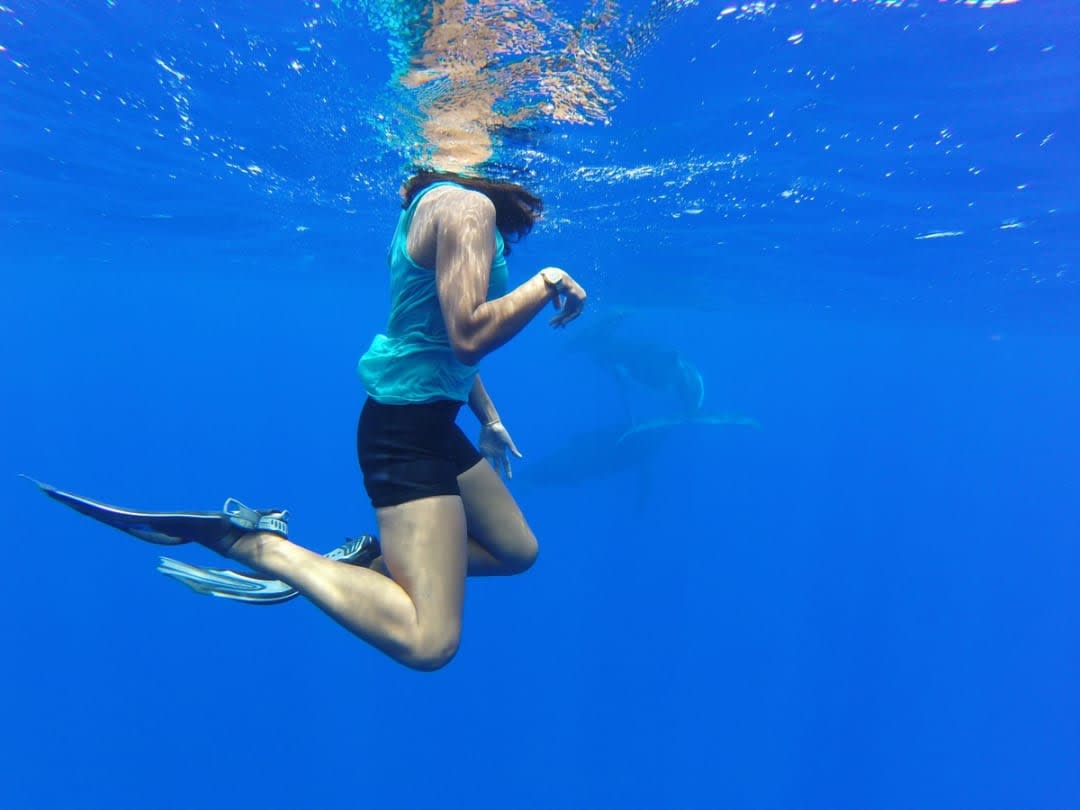
Once in the water, swim slowly towards the animals, without making any noise and in groups, up to a distance of 15 metres. At this stage, waiting grouped together and motionless for the animals to come to you is the best way to build trust and encourage them to come and interact with you. If they do come, don't go over to them, even if the temptation is strong. Wait for them to come to you and initiate an interaction. Then follow what they suggest by making slow, gentle gestures without trying to touch them (swim alongside them, turn with them on the spot if they turn around, etc.).
And if the animals move away, let them go, because they probably have vital things to do and/or simply because their curiosity about you has been sufficiently fed. Swimming behind them at full speed will only make them leave more quickly. So it's pointless. On the other hand, if you let them get out of the way and wait without moving, with a bit of luck they may sometimes come back :).
This is what is known as a passive, non-intrusive and respectful approach. The disturbance caused by the boat is greatly reduced if it is discreet and slow while keeping its distance. The animal, for its part, is free to pursue its activities undisturbed if it so wishes. Just as it is free to come to you and interact for as long as it likes, without stress or risk.
Jumping on animals from a boat and/or swimming towards them will systematically cause them to flee (not to mention the stress you will generate and the fact that you will be disrupting their vital activities). So it's just as counterproductive for you as it is damaging for them.
Respect is the key to taming wildlife. It's the only way to build mutual trust that makes interaction and wonder possible.
5. Can you touch marine mammals?
There are millions of visitors a year who come to meet them. Imagine the number of diseases we can transmit to them, and the slim chance of survival they would have if we touched them...
Imagine a complete stranger trying to caress you or hug you because he or she thinks you're adorable! How would you feel? Stress and fear? But probably also discomfort or anger due to the lack of respect for your physical integrity, right? And what would your reaction be? Most likely flight or violent rejection... After all, only people who are close or intimate to you and/or to whom you have given your consent may touch or embrace you. This is the code that governs our social relations for the well-being of all. It's the same with all marine and land mammals, and their feelings and reactions will be very similar to ours. That's why, quite apart from the problem of zoonoses (diseases that can be transmitted between humans and animals), touching unknown wild animals is not appropriate. At best, they will move away from you for their own safety. At worst, you risk being injured by the animal's reaction, even if this was not its intention.
6. The importance of acoustic and visual discretion
If you go into the woods to look for deer, will you enter the forest at full speed with your engine roaring or will you make yourself as discreet and silent as possible to avoid scaring them away and so succeed in spotting them?
The same applies to cetaceans or any wild animal. Noise will scare them away before you can even see them. Minimising noise is therefore very important if you are to succeed in observing them. But also, and above all, to avoid unnecessary stress for the animals.
Similarly, once in the water, swimming gently and silently without making a splash with your arms or feet is just as important.
7. Respect regulatory distances and approaches
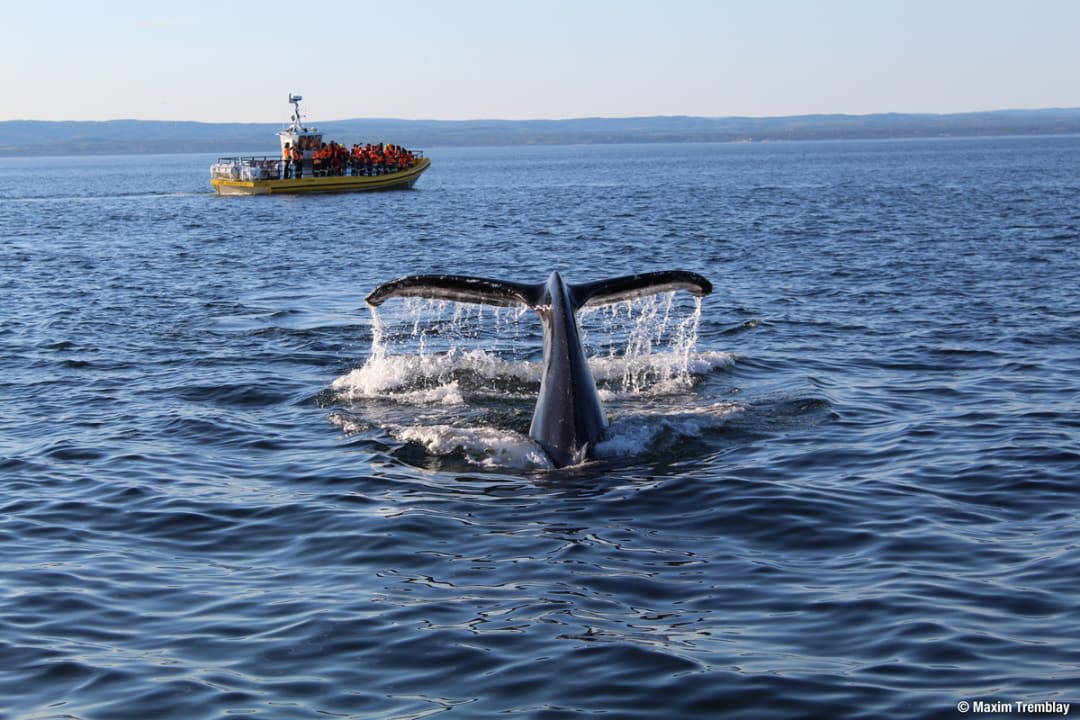
To be able to observe cetaceans, the distance between the boat and the animal must be sufficiently large for the animal to be able to pursue its activities without worrying about your boat as an intruder.
You can then watch them quietly go about their business. Once again, whether it's a land or sea animal, the same applies. Any good bush tracker will keep his 4x4 at a distance from a herd of buffalo so that you can get a good long look at them. If he were to get too close, the animals would stop their activity and go on the alert. And if you came a little closer, they would move away or flee for their safety. This is systematic and would put an end to any chance of observing them.
This is the notion of flight distance in ethology. This is a distance beyond which animals do not feel in danger from an unknown intruder (whether an object, an animal or a human). Conversely, if you cross it, the animals will flee or move to maintain a safe distance between you and them, not knowing whether you represent a danger or not.
This distance varies greatly depending on the species, but also on the context, the circumstances and the intruder in question. An injured animal, for example, will have a greater escape distance because it knows it cannot run fast, compared with an animal in good health. An animal that is already used to boats, 4x4s and/or humans may let you approach much closer than an animal that has never encountered this type of intruder. Why is this? Because it has already seen that there is no great danger.
You therefore need to assess the right distance to respect each time in real time, and this is where your guide's expertise will make all the difference.
The international charters for approaching and observing cetaceans nevertheless serve as a benchmark for everyone and enable even the least initiated to be respectful. They state that a minimum of 100 metres must be maintained between a boat and a whale or sperm whale, and a minimum of 30 to 50 metres between a boat and dolphins or small toothed cetaceans.
Once in the water, keep a distance of 10 to 15 metres from any cetaceans. If the cetaceans approach further on their own accord, let them and enjoy the show, as your safety is the only thing at stake (finding yourself behind a large cetacean close to its caudal fin is dangerous, for example, so it's best to keep your distance, etc).
8. What equipment is needed for respectful observation?
When you're on a boat in summer, take something to protect you from the sun: hat, sunglasses, long-sleeved lycra, sarong, etc. and water. And above all, choose special organic sun cream, because without it, your cream, whose ingredients are toxic to the survival of coral and marine species, will spread all around you, even if you put it on well before setting out to sea. In winter, add something to protect you from the wind and cold (a warm, windproof fleece and parka, as well as waterproof footwear). Binoculars are of course useful, as are cameras and videos. If necessary, a waterproof, padded bag to protect them from water and knocks is essential.
Taking an active part in conservation
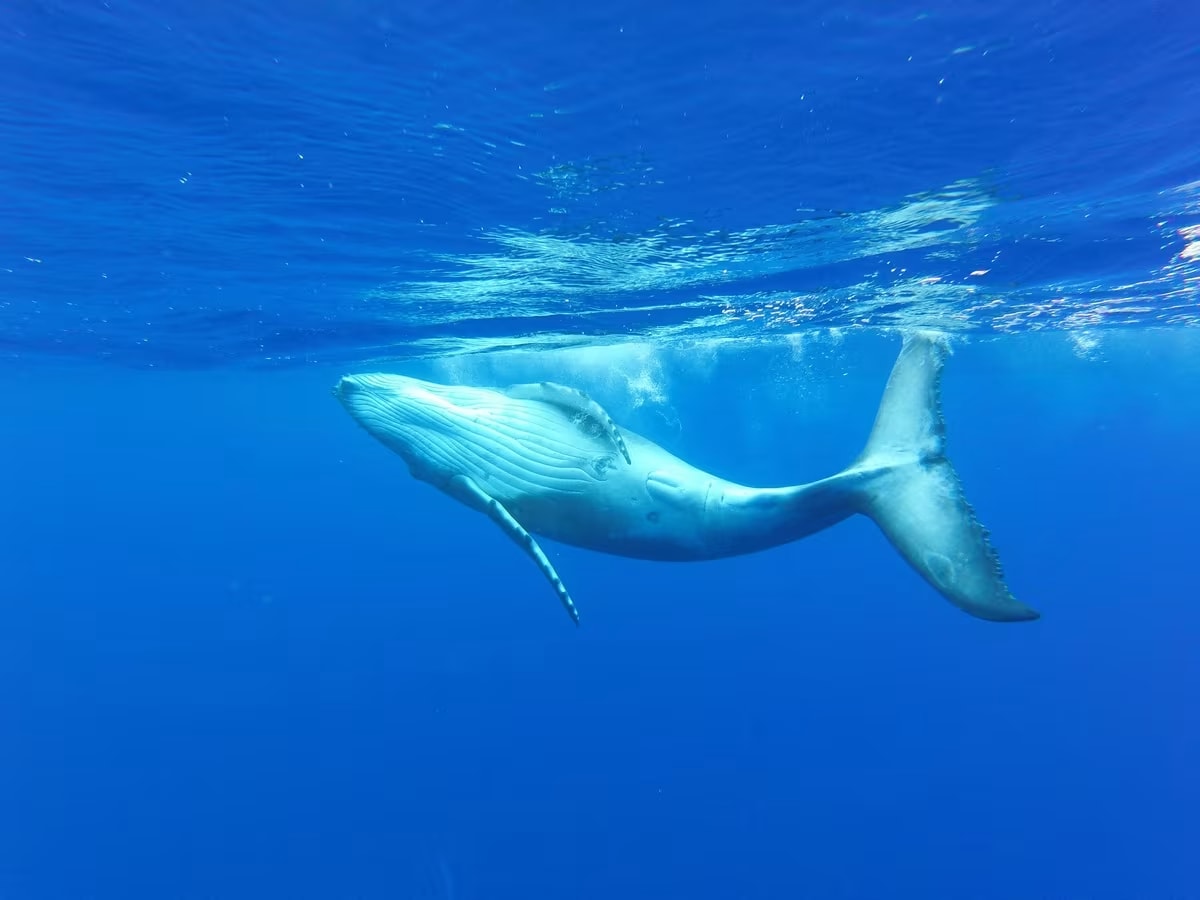
There are now eco-participation or ecovolunteer trips that allow you to make your dreams come true while contributing to conservation projects. Eco-participation trips are real, comfortable holidays that allow you to come into contact with animals while making a moderate contribution to a conservation project. Ecovolunteering is a more involved option, with varying durations and slightly more rudimentary conditions.
There are also full- and half-day outings organised by scientists and marine life conservation associations to provide financial support for their work at sea. It's a great opportunity to learn more about these species and their problems and to support their work.
There are also a number of apps such as PADOC, MObI, Whale Alert etc. and collaborative platforms such as OBSenMER that allow you to take part in the cetacean census. Find out which one is relevant to the country you are visiting and download it so you can enter your observation data and photos or videos. This way, everyone can play an active part in the conservation of cetaceans.
Finally, be aware that there are also apps, platforms and NGOs that you can use to report strandings, injured animals, animals caught in nets and so on. If you should witness one of these incidents, record the animal's GPS location and inform the port authorities straight away (or if not, when you return from your outing at sea) and also inform any contacts you may have found on the internet.
Observing and interacting with these emblematic marine species can be extremely destructive for them when it is carried out in the form of totally unreasonable and disrespectful mass tourism. On the other hand, if tourism becomes responsible, it can be an opportunity to discover them and raise public awareness. And this tourism can also contribute to conservation efforts if it is eco-participatory and committed. While it is certainly up to the authorities to take action, it is just as crucial for travellers to make informed and responsible choices.

To find out more about the behaviour of marine mammals, the ethics of swimming with cetaceans and their eco-participatory and eco-responsible trips with cetaceans, visit the DOLPHINESSE website and that of its association SPLENDEUR NATURE, which works for the conservation of cetaceans.